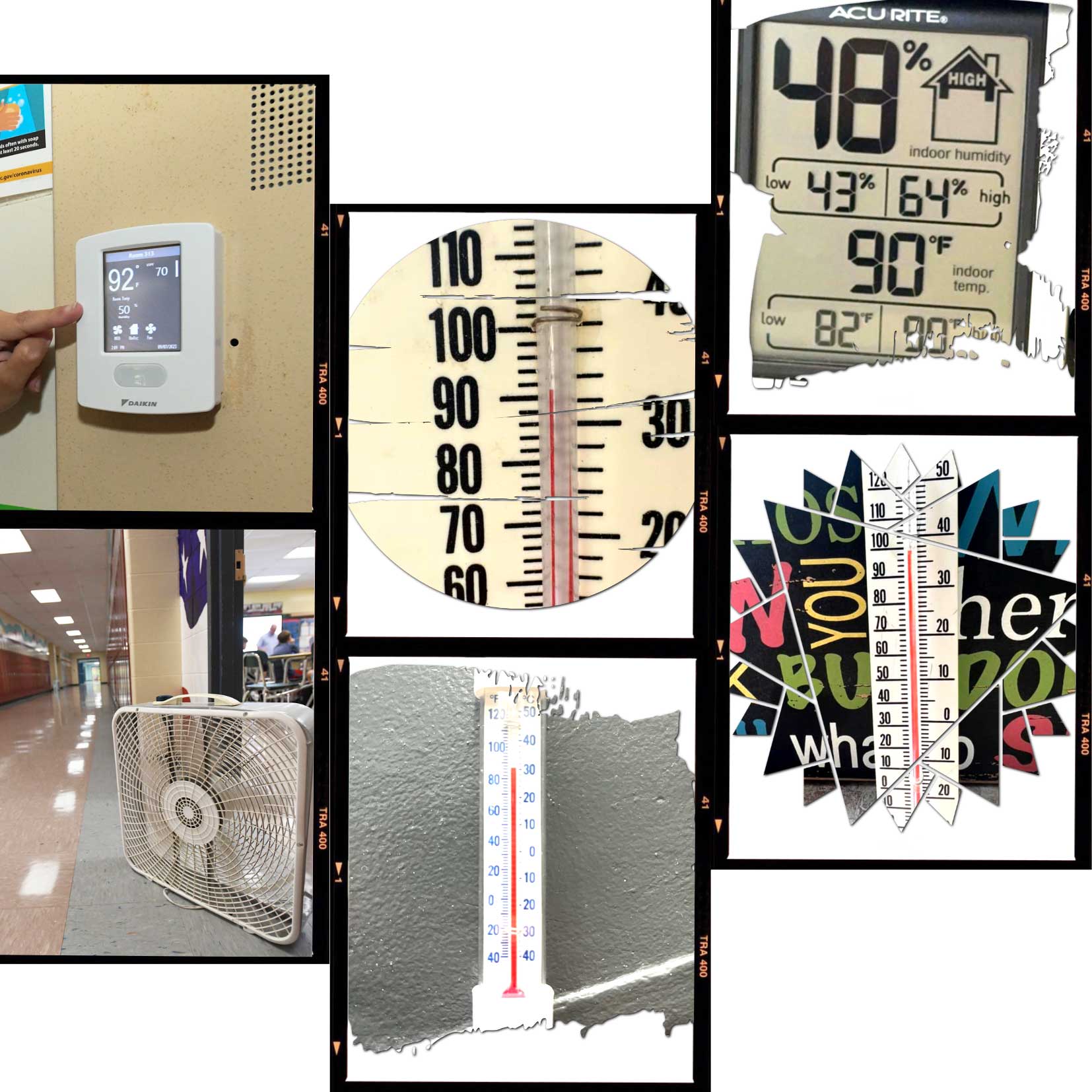It’s late May, and that means that classrooms across the state will soon be engulfed in oppressive heat and humidity.
Absent air conditioning and forced to contend with windows that don’t open and doors that must stay closed, most educators are helpless to do anything but watch the mercury rise.
This month, educators in Lake Shore sounded off about the excessive classroom temperatures and the lack of state regulation. The small district is on the eastern edge of Lake Erie.
“Our district has attempted to resolve some of the problems with air conditioning, but a number of classrooms at both the elementary and high school level remain uncooled,” said Kevin Schamberger, president of the Lake Shore Central Teachers Association. “This time of year, many kids are taking their Regents exams in rooms that are just too hot. How can we expect them to do well?”
“As June arrives, so does the heat in Western New York,” said Kerry Feldmann, a math teacher at the senior high school. “I have three fans I purchased for the room where I teach ... this doesn't help much, but at least the students know I am trying. For safety, we have been told over and over how important it is to keep the doors closed and locked, but this makes the room almost unbearable. We need a plan in place for these hotter months!”
“The heat in my classroom is unbearable,” said Jennifer Tokasz, a high school social studies teacher. With doors shut for safety reasons, there’s no cross-breeze, and the fans Tokasz brought from home do little to alleviate the oven-like room. “I am located on the second floor, so the heat rising from the first floor causes the temperature to be warmer. I have five windows in my classroom that only open outward, which prevents much of the wind and cool air from entering the classroom. The 'rescue window' opens fully but we are not allowed to open it (even on hot days) because it could fall off the hinges and injure someone below.”

As temperatures rise, students wither. “During warm months, quality instructional time is lost,” Tokasz added. “Some kids shut down completely and just have their heads on desks.”
“When the temperatures increase into the upper 80s with high humidity, I have seen both adults and students become physically ill. The amount of learning that takes place on these days is minimal because it is so difficult to concentrate,” said Cornelius Donovan, a science teacher. “Until climate control can be installed in buildings, heat days should be acknowledged.”
Meanwhile on the other side of the state, Islip educators are facing nearly identical conditions.
“Our central administration and building administration are all in agreement that these buildings are too hot,” said Robert Le Vien, president of the Islip TA. “We don’t have the resources to do what needs to be done.” The district has plans to float a bond in the next two years to upgrade electrical across all five buildings, so they can install air conditioning. In the meantime, state-set heat maximums are essential, Le Vien said. “I think this is long overdue. We’re very, very thankful that this might happen this year,” he said.
“The temperatures in our room get to over 90 degrees due to the sun that beats onto our building in the afternoon,” said Patricia Specht, a second-grade teacher at Commack Road Elementary School in Islip. Specht’s room has a univent system, which pulls hot air in from the outside, making the already-sweltering classroom even hotter. “The children are unable to concentrate due to the extreme heat within the room.”
“It is difficult to keep the attention of a seventh grader on any given day but try teaching them math when the humidity in the classroom is 100 percent,” said Nicholas Apicella, a math teacher at Islip Middle School. “The worksheets are moist and curling up; sharp pencils are ripping the paper. Student's arms are sticking to desks and my shoes are squeaking because of the moisture on the floor. This is not the ideal place to learn and grow.”
And teachers say it isn’t just the months leading into summer that are unbearable, the beginning of the school year is also treacherous.
Last September, during a record-setting heat wave, we visited a Saratoga Springs school to how they were dealing with extreme temperatures.
“This past September when school began, temperatures soared into the high 90s in Islip. My second-floor classroom was unbearably hot without air-conditioning,” said Ryan Wenzel. Wenzel teaches ENL at Wing Elementary in Islip and pulls students from an air-conditioned room for services in his uncooled classroom. Naturally, students don’t want to go, he said. “The students were sickened by the conditions, as was I.”
NYSUT continues to lobby for the passage of A.9011 (Eachus)/S.3397 (Skoufis), which would establish a maximum temperature in school buildings and indoor facilities and require schools to take action to alleviate heat when it reaches these levels. The bill is in committee in both houses, where it has garnered more than 70 co-sponsors.